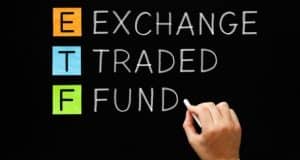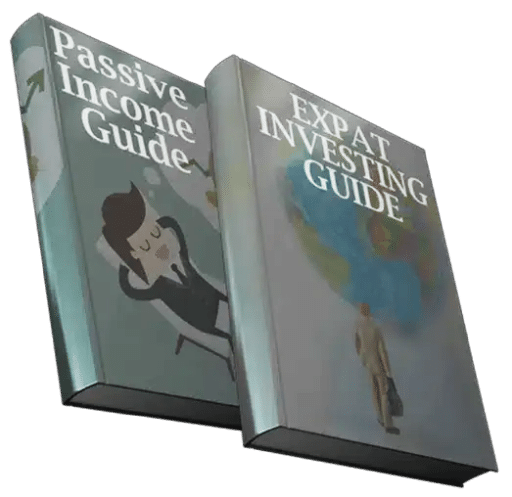Updated February 8, 2022
In this article, you can find out the options of buying US ETFs that can be available for Europe, including US ETFs such as Vanguard and BlackRock ETFs. Recently many of you asked me “when is the best time to invest”?
No one can count the markets and tell you the best period that is good to make your investment and it is always better to be diversified. At the same time, these estimates look attractive for any long-term investor.
According to Warren Buffett, you should invest “when there is blood on the streets”.
For details about how to open your accounts, and invest in US funds including Vanguard from Europe, you can contact me using this form, the WhatsApp function below, or just by emailing me (advice@adamfayed.com).
Those who prefer video content can also watch the summarized video here:
What are ETFs
ETFs or “exchange-traded funds” first appeared in the markets in 1993. Exchange-traded funds are similar to stocks and are usually traded on stock exchanges.
It typically consists of assets such as bonds, stocks, equities, and commodities that exist to trade closer to net asset value (with little chance of deviation). Each ETF individually consists of more assets. For example, the ETF following the S&P 500 index is made up of 500 stocks. Some of the popular post-ETF stock indexes are the NASDAQ 100 and the S&P 500.
Asset Management Companies such as Vanguard or BlackRock issue ETFs and each of the individual asset management company is able to issue more ETFs. Exchange-traded funds generally track an Index which is Stock Index or Bond Index. It is estimated that between 1993 – 2015, 2 trillion US dollars were invested in ETFs in the United States of America.
The most attractive features that make ETFs into an worthy investment option are their lower costs, tax efficiency, a big number of choices, features similar to the ones related to stocks, etc.
Different types of ETFs
Low Costs: When you compare ETFs to other mutual funds, they have lower costs. The annual overall costs can be 0.1%, but the annual management fees of mutual funds can be around 1-2%.
Tax Efficiency: ETFs have an attractive tax efficiency, compared to other popular investment options. But there is an exception in the case of Vanguard company’s ETFs, as there you cannot enjoy the tax advantages.
Many Choices: You can find a wide range of options for choosing ETFs from various sectors.
Trading of ETFs: In comparison with the mutual funds, that can be traded only at the end of the day, ETFs can be traded at any time when the market is open.
Buying an ETFs online:
The most asked questions that people usually ask themselves when they want to buy online or invest in an ETF are:
- What are the most important key factors I should keep in mind while buying an ETF online?
- How can I invest in an ETF online?
- What is the process involved in trading an ETF online?

The main steps of buying an ETF online are:
- Get accurate and reliable information about the country, region, or sector in which you are going to invest. If you predict growth in the country’s market, you can purchase an ETF which follows an index of that country’s stocks. In the other way, you can buy a sector-specific ETF that follows the sector stock index for the respective country if you are forecasting growth for the sector rather than the country-wide market. For example: if you predicted the US market is going to rise, you can go ahead and buy an ETF that follows an index made up of US stocks such as the S&P 500. If you expect growth in a sector such as technology, then you can buy an ETF that tracks an index containing US technology-related stocks such as the “NASDAQ 100”.
- Check ETFs based on their size and expense ratio, and try choosing a larger ETF with a lower expense ratio. Large ETFs tend to be more liquid than smaller ones. The size of ETFs is classified based on their “Assets Under Management”, which is known as “AUM”. The higher the value of the ETF, the more the liquidity of the ETF will increase. The ETF expense ratio indicates the ETF’s average annual fee. It is highly recommended to choose an ETF with an expense ratio below 0.1%.
- Select the location, stock exchange, and currency of the preferred ETF you plan to trade. ETF taxation varies by location. 90% of ETFs are based in the US and the EU (70% in the US and 20% in the EU). The stock exchange is different from the place of residence.
You can also trade ETFs on a wider range of stock exchanges. Although it is recommended to choose stock exchanges with low commission rates. Commission rates actually can be different depending on the broker you choose. To avoid conversion fees, you must choose an ETF and a broker with the same currency, since the stock exchange results in a different currency.
- Finding a good broker plays a key role in ETF trading. Considering important aspects such as broker commissions, easy access, trading platform and user friendliness, you can find the right broker according to your requirements. It is also very important that you choose a reliable and reputable broker while you are looking to avoid risks.
- Buy the ETF you want to trade. Find the ETFs you want to buy on the online trading platform. You can buy ETFs through an online trading platform where you can choose from a variety of order types.
- Always keep an eye on the details of your ETF, regularly and impartially. Now that you’ve bought an ETF, it’s important to keep an eye on the details from time to time. It is best if you cultivate a strategy for choosing to keep ETFs for a longer or shorter period and manage them properly to prevent losses and achieve a targeted profit.
These tips are the basis of trading by ETFs and can be necessary for you. By having the right plan and following these techniques thoroughly, you can be able to reach benefits from the ETFs that you have purchased.
Do it yourself providers (DIY)
DIY investing often doesn’t work statistically speaking . For a number of people who are interested in DIY providers, here are some of the best in market online brokers for investing in ETFs in 2022:
- ‘Charles Schwab’ – is considered the best online platform for investing in ETFs. It was and always has been the best lawyer for those who want to invest individually. It is also popular for its discounts and is considered to be one of the most affordable platforms on the market. Brokerage fees on all ETFs are equal to zero, and individual stock trades are also free.
Pros:
- You can create a better and well-diversified portfolio using the ETF Portfolio Builder.
- You can find the best funds for a portfolio using ETF screeners.
- There are no extra or hidden charges for using Schwab platforms and mobile applications.
Cons:
- The presence of an overabundance of platforms makes it difficult to find tools.
- Obliging an investor to hire the Schwab financial advisor.
- ‘Fidelity Investments’ – best for online research and tools. The company offers good ideas for investments aimed at generating income. The research center provides ETF comparisons and ETP comparisons to help the investor get better and improved results. Their Screener gives you the opportunity to search based on their standards, that includes fundamentals, exposure, rankings, performance, unpredictability, and more.
Pros:
- The process of researching and analyzing ETFs is comparably easy with the help of their ETF Research Center.
- It has a well-cultivated mobile app, which is easy to navigate and use.
Cons:
- It is advised to utilize more than one platform, to have an access to all the offers provided by the company.
- The company’s branches are not available 24/7.
- ‘TD Ameritrade’ – for beginners, it is best to invest in ETFs. US clients have a number of benefits as they charge no fees for trading ETFs, stocks, options, etc. This is the best choice if you want to control your investments online or using your mobile device.
Pros:
- You can make voice transactions using Amazon Alexa.
- You can access to all of their trading platforms and both of their mobile apps.
- Access to useful articles, instructional videos and live streams from 360 US affiliates.
Cons:
- If not able to hold an ETF for 30 days, you will be charged 13.90 dollars.

- ‘Vanguard Group’ – as the world’s largest mutual fund provider, this is a good option for ETF trading, suitable for any type of investor. The group is also the second largest ETF provider in the world. This is the base level and is not preferred by active traders or individuals who want to use advanced charting capabilities. A great choice for those who are interested in investing in low cost ETFs and want an EA to do the analysis.
Pros:
- No commission on trading approximately 1,800 ETFs from over 100 vendors.
- Advanced analysis level.
- Lower management costs compared to others.
- The services of a personal consultant are available at an affordable price.
Cons:
- Account maintenance fee applies to Vanguard assets of less than $10,000.
- Not suitable for active investors and charting professionals.
- ‘E*TRADE’ – No fees for trading stocks and ETFs in the US. The company offers effective tools and resources. Features such as the All-Star ETF List, ETF Screener, and pre-built ETF Portfolios (this is a tool that helps you choose the best ETF based on your preferences, such as investment timeframes and risk tolerance) help you select your own investments.
Pros:
- Available 24/5 for some active ETFs.
- Quickly respond to market news outside business hours.
- The tools can be used through the web platform.
- Availability of watchlists for mobile applications.
- Interactive chat and phone support available throughout the week.
Cons:
- Margin rates are slightly more expensive.
- As with Fidelity Investments, it is recommended to use multiple platforms to access all the offers they provide and the tools you intend to use.
- ‘Ally Invest’ – this is another good US based broker where you can make good profits by investing in ETFs. The broker provides you with very good research tools and resources that can help you when trading ETFs. Its web platform is user friendly and very efficient. It also comes with the same benefits as the other online brokers we talked about above.
Pros:
- No fees and no account minimum.
- Extremely helpful research tools.
- Well-designed and efficient web-based platform.
Cons:
- You pay $9.95 while transacting the mutual funds.
- There are no branches for the online broker.
In case you are interested in using Robo advisors (like Betterment) to make the investment for yourself, below you can find a table that will be useful for you. Always try to keep the tips in mind and look for the best online broker to make a profit by investing in ETFs.
ETFs.
| Broker Name | Charles Schwab | Fidelity Investments | E*TRADE | TD Ameritrade | Vanguard | Ally Invest |
| Account Minimum | $0 | $0 | $0 | $0 | 3000$ | $0 |
| Fees | $0 | $0 | $0 | $0 | $7 per stock | $0 |
| Promotion | Up to $500 | n/a | Up to $2500 | n/a | n/a | $50 – $3500 |
| Number of commission-free ETFs | all | all | all | all | Around 1800 | all |
| Mutual fund Transaction Fees | $49.95 per trade | $19.95 per trade | $0 | $0 | $20 for account balance less than $10,000. | $9.95 per trade |
| Rating | 4.5/5 | 4.5/5 | 4.3/5 | 4.5/5 | 4/5 | 4.5/5 |
Choosing between US or EU ETFs:
Since you have read the details about ETFs and online brokers to buy ETFs, below you can find some other details about “US ETF” and “EU ETF”. As already mentioned, the US accounts place about 70% of the ETF market, while the EU accounts have 20%. The main difference between US ETFs and EU ETFs is based on the country or region where the ETF was issued. An ETF can track the same index but have a different address. The main and most important factors to consider when choosing between US and EU ETFs are taxation, liquidity, and regulation.
- ‘Taxation’ – The taxation of an ETF is affected by the location of the ETF and the tax residency of the respective investor. When trading ETFs, taxes such as withholding tax, income tax, and capital gains tax may arise. In that case, try to always keep these aspects in mind when trading. More information you can get from your accountant or tax advisor.
- ‘Liquidity’ – By the end of 2018, the EU ETF market was valued at $800 billion, while the US ETF market was around $3,700 billion. It was previously mentioned that ETFs with higher liquidity are preferable for transactions over a short period of time compared to ETFs with lower liquidity. EU ETFs have lower liquidity than US ETFs, making them higher spread costs.
- ‘Regulation’ – In January 2018, a regulation came into effect that officially prohibits European investors from buying U.S.-registered ETFs. This is due to the lack of a document with key information. They can trade EU-registered ETFs that comply with the rules of the new PRIIPS (Packaged Retail Investments and Insurance Products) regulation.
How can I buy US ETFs in Europe:
Now you may be interested if there is a chance to buy US ETFs in Europe. We will try to give you a comprehensive answer and all the details that will dispel your doubts about this.
Under the PRIIPS regulation, you cannot trade US-registered ETFs while in Europe because US-registered ETFs do not contain “KID”. The key information document contains the details of the investment such as risk, cost, etc. This key information document gives the investor complete information about the investment. The largest ETF issuers have announced that they are unwilling to provide key information documents. Instead, they invited EU clients to invest in similar EU domiciled ETFs, which is effectively allowed under the PRIIPS Regulation.
An alternative is to invest in UCITS (collective investment commitments in transferable securities) ETFs. These ETFs are regulated by the European Union and have a UCITS KID. You can invest in your favorite ETFs as long as they are UCITS ETFs from issuers like Vanguard and BlackRock. These two issuers are mentioned among many other issuers as they are highly liquid due to their assets under management worldwide, where Vanguard is valued at $5.30 trillion and BlackRock is valued at $5.98 trillion. Because they have higher assets under management, they have high liquidity as well as lower fees.
The followings are the S&P 500 UCITS ETF from Vanguard and BlackRock.
For Vanguard the S&P 500 UCITS ETF is as follows: Vanguard S&P 500 UCITS ETF (USD) Distributing (VSUD)
For BlackRock, the S&P 500 UCITS ETF is as follows: iShares Core S&P 500 UCITS ETF(CSPX)
Comparison of US-domiciled funds and UCITS funds:
There are three main aspects that are considered while comparing the UCITS funds to US Domiciled funds are:
- Annual Expenses
- Commissions
- Liquidity
‘Annual Expenses’ – these are comparatively lower than that of UCITS ETFs.
- The annual expenses of ‘Vanguard (US Domiciled) VOO’ are ‘0.04%’.
- The annual expenses of ‘Vanguard UCITS VSUD’ are ‘0.07%’.
- The annual expenses of ‘iShares UCITS CSPX’ are ‘0.07%’.
Here we can see that the annual expenses of trading US Domiciled ETFs are lower than UCITS ETFs.
‘Commissions’ – These include fees for buying an ETF for the first time. When you trade to maintain a good and well-balanced portfolio by using communication brokers and buying up to $100,000 ETFs that follow the S&P 500 Index. These charges will be as follows:
- The commission charges for ‘Vanguard (US Domiciled) VOO’ are ‘2 USD’.
- The commission charges for ‘Vanguard UCITS VSUD’ are ’50 USD’.
- The commission charges for ‘iShares UCITS CSPX’ are ’50 USD’.
Interactive broker fees will be around “$0.005 – $0.0075” for each share depending on their routing. Whereas for trading on the London Stock Exchange it is “$0.05”. Here we can notice that fees for US-listed ETFs are comparatively lower compared to UCITS ETFs.
‘Liquidity’ – We already know that the liquidity of an ETF depends on the assets under the management of the respective ETF. A growth in the number of assets results a high amount of liquidity and a lower spread cost. Thus, with higher liquidity, the purchase price and the sale price of an ETF can be similar to each other.
- The worth of the Assets owned by ‘Vanguard (US Domiciled) VOO’ is ‘$448.6B’.
- The worth of the Assets owned by ‘Vanguard UCITS VUSD’ is ‘$22.4B’.
- The worth of the Assets owned by ‘iShares UCITS CSPX’ is ‘$32.9B’
The US-based ETFs have a high percent of liquidity, which is more than UCITS ETFs as the assets under management for the US-based ETFs are relatively higher.
As result, we can summarize, that UCITS ETFs are far less profitable than US-listed ETFs. This is in line with the results we have seen compared to US-listed ETFs with the UCITS ETF. While there are more benefits to trading US-listed ETFs, people looking to invest will be out of luck as the Key White Paper is not available for US-listed ETFs, and PRIIPS regulation does not allow trading of ETFs without a Key White Paper.
However, there is an advantage to trading UCITS ETFs: US inheritance tax does not apply to this type of trading. US real estate tax applies when the amount of ETFs registered in the US exceeds $60,000 and the tax will be around 40% unless your country has a tax treaty with the United States of America.
Although, if you are a professional client, trading US-registered ETFs is very difficult. The requirements for a professional client are a huge portfolio, half a million cash, Expert level professional training, and significant trading experience.
Having studied all the information provided, you will be able to choose the ETF in which you are ready to invest. By following the above tips and methods, you can make successful profits by trading ETFs. We hope you found this article helpful.
Pained by financial indecision? Want to invest with Adam?
Adam is an internationally recognised author on financial matters, with over 760.2 million answer views on Quora.com, a widely sold book on Amazon, and a contributor on Forbes.



